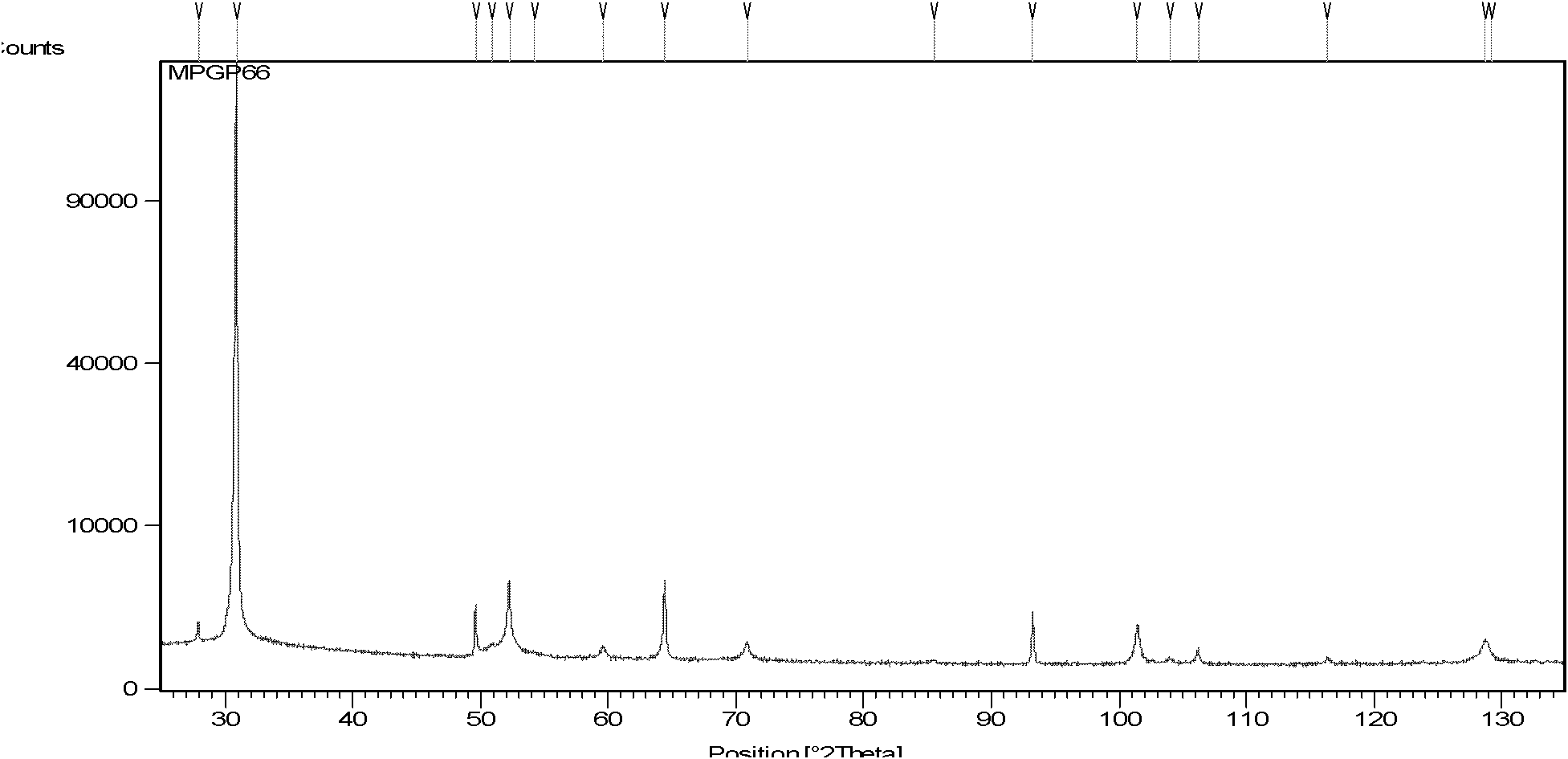Lithium ion battery cathode material and preparation method thereof
A lithium-ion battery and negative electrode material technology, which is applied in battery electrodes, circuits, electrical components, etc., can solve the problems of battery discharge capacity, capacity retention rate, cycle life, and other issues that are difficult to meet, and achieve high discharge capacity. , the effect of reducing irreversible losses, energy consumption and low production costs
- Summary
- Abstract
- Description
- Claims
- Application Information
AI Technical Summary
Problems solved by technology
Method used
Image
Examples
Embodiment 1
[0035] 1. Grinding large particles of graphite into fine powder with a particle size D50 of 10 μm,
[0036] 2. Mix the above-mentioned graphite powder and epoxy resin according to the mass ratio of 100:1, and react at 400°C for 10 hours. After the reaction time is reached, lower the reaction temperature to room temperature and pass it through a 200-400 mesh screen.
[0037] 3. After the reaction in step 2, mix the above product with ethylene tar according to the mass ratio of 1:100, and react at 400°C for 10 hours;
[0038] 4. After the reaction in step 3, the mixture is first roughly washed in washing oil, and then finely washed with its pyridine;
[0039] 5. The washed composite material is subjected to graphitization treatment in a high-temperature furnace at 2800° C. for about 10 hours to obtain a core-shell type negative electrode material.
Embodiment 2
[0041] 1. Grinding large particles of graphite into fine powder with a particle size D50 of 15 μm,
[0042] 2. Mix the above-mentioned graphite powder and phenolic resin according to the mass ratio of 100:3, and react at 550°C for 5 hours. After the reaction time is reached, reduce the reaction temperature to room temperature and pass it through a 200-400 mesh screen.
[0043] 3. After the reaction in step 2, mix the above product with petroleum asphalt according to the mass ratio of 1:50, and react at 600°C for 3 hours;
[0044]4. After the reaction in step 3, the mixture is first roughly washed in washing oil, and then finely washed with toluene;
[0045] 5. The washed composite material is graphitized in a high-temperature furnace at 3000° C. for about 35 hours to obtain a core-shell negative electrode material.
Embodiment 3
[0047] 1. Grinding the mixture of large particles of natural graphite and artificial graphite into a fine powder with a particle size of D50 of 5 μm,
[0048] 2. Mix the above-mentioned graphite powder with the mixture of phenolic resin and epoxy resin according to the mass ratio of 100:5, and react at 300°C for 15h. After the reaction time is reached, reduce the reaction temperature to room temperature and pass it for 200- 400 mesh screen,
[0049] 3. After the reaction in step 2, mix the above product with a mixture of ethylene tar and coal tar (ethylene tar: coal tar = 1:1) according to the mass ratio of 1:50, and react at 500°C for 6 hours;
[0050] 4. After the reaction in step 3, the mixture is first roughly washed in washing oil, and then finely washed with toluene;
[0051] 5. The composite material after washing is graphitized in a high-temperature furnace at 2000° C. for about 30 hours to obtain a core-shell type negative electrode material.
PUM
| Property | Measurement | Unit |
|---|---|---|
| Particle size | aaaaa | aaaaa |
| Particle size | aaaaa | aaaaa |
| Particle size | aaaaa | aaaaa |
Abstract
Description
Claims
Application Information
 Login to View More
Login to View More - R&D
- Intellectual Property
- Life Sciences
- Materials
- Tech Scout
- Unparalleled Data Quality
- Higher Quality Content
- 60% Fewer Hallucinations
Browse by: Latest US Patents, China's latest patents, Technical Efficacy Thesaurus, Application Domain, Technology Topic, Popular Technical Reports.
© 2025 PatSnap. All rights reserved.Legal|Privacy policy|Modern Slavery Act Transparency Statement|Sitemap|About US| Contact US: help@patsnap.com



